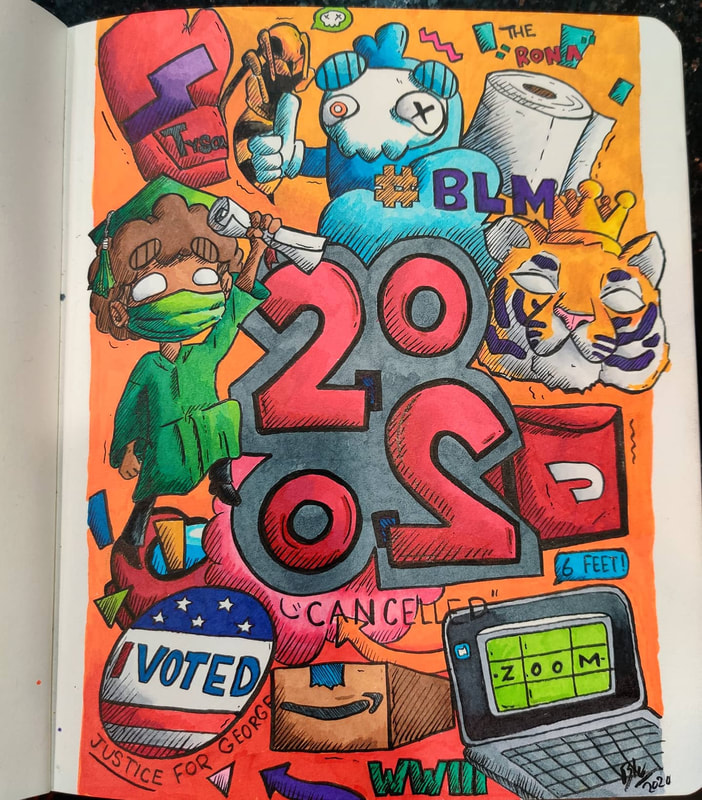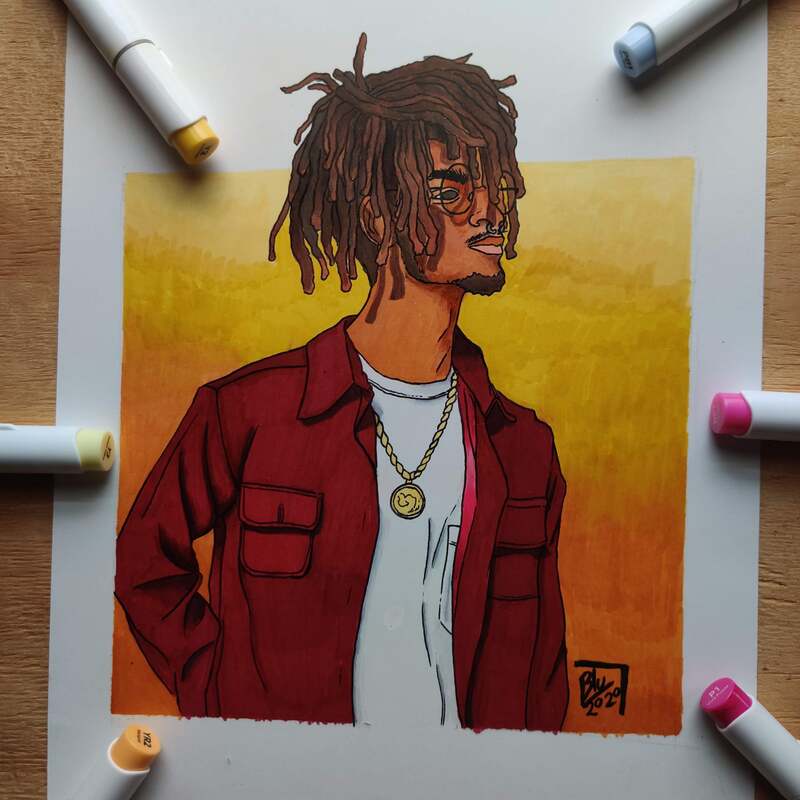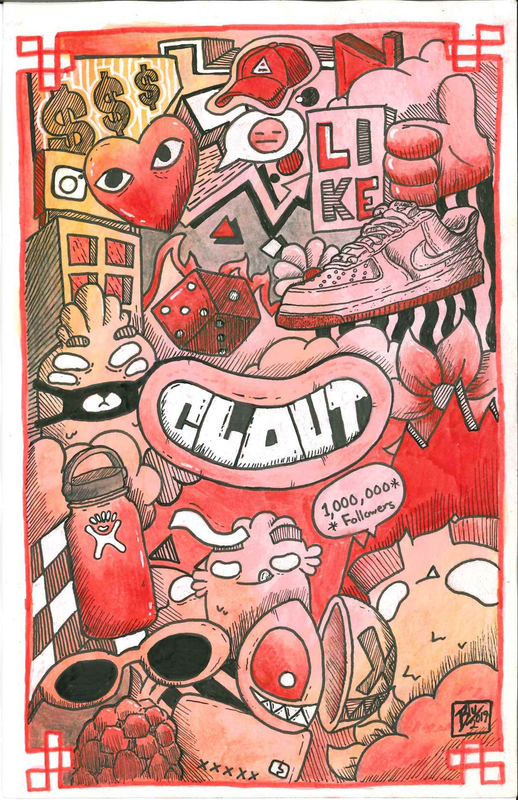|
By Aaron Zhang Michael Johnson explores different emotions through his vibrant doodle art pieces. In his piece about 2020, “CANCELLED,” he layers drawings of an Amazon package, a BLM hashtag, him graduating, a hornet nearly blending into the background, and one of his signature characters giving a thumbs-up to the viewer. He shows a range of colors and directions depicting the nuances, both happy and sad, of the year. As the piece demonstrates, emotional expression and empathy are major themes in his art, something he looks at through various lenses. For example, “you think about red: you think about love, or you think about anger,” he said. So he then creates “characters that show these different traits.” Some characters could be fuming; others could be simmering quietly. All are drawn in Johnson’s signature style: rounded features, bright colors, and playful expressions. Johnson, a freshman at College for Creative Studies, explained that doodle art is like a diary to him: “Personifying all the feelings I have at that time,” he said, doodle art “locks it in a moment so I can always refer back.” Johnson connects emotional expression with activism through his art. He participates in organizations such as Detroit Area Youth Uniting Michigan, which supports marginalized youth in effecting change. He was especially inspired by Senator Rashida Tlaib, who spoke at a meeting: “The platform that she had—she was using it to give back to her community.” The work of activists inspired Johnson to use his artwork to create change. “I really want to, further than I can even see,” he said, “have an impact on those around me.” And he attributes much of his artistic inspiration to his work in activism: “If I didn't do that, I don’t think my art would’ve been the same. It wouldn't be rooted in an idea that can help others.” Johnson’s work focuses on normalizing mental health. Diagnosed with ADHD at age five, Johnson found art to be a release. “It calmed me down, and it allowed me to focus on one thing for an extended amount of time.” As he’s gotten older, he realized that ADHD has various complex and personal symptoms. He turned to art to decipher his ideas and emotions. His work helped him explain and educate others about his experience, and through it, he found a community of people who related to him, “an audience of other people that are like, ‘I also feel that, and you understand me,’” he said. Thus, Johnson aims to use doodle art as an expression for both himself and others. The art form is random, expressive, and open to interpretation. As people pick a complex, layered work apart and notice ideas they connect with, they can empathize with the artist. And because many mental health struggles can feel isolating, sharing one’s experience can help others. Johnson’s motivation, he said, is “knowing that I can help other people better understand themselves.” To further that goal, Johnson’s art advocates for mental health awareness, particularly for people of color. “In the Black community, there’s always a stigma: mental health is not seen as equal to regular health,” he said. “I want to have other people understand that they aren’t alone in their situation.” In addition, they can take action by learning and educating others about mental health. Johnson hopes that education will lead to a chain reaction; more and more people can understand and empathize with those with mental health struggles. Johnson applies this approach of empathy to his work in racial equity. “A lot of racial inequity is based on assuming that you have a full understanding of somebody’s situation,” he said. That’s not necessarily the case. For Johnson, it is key that people approach art with a mindset of empathy and equity, because people of color may face barriers where resources are limited, “and you’re expected to put forth this masterpiece that others are already at an advantage for,” he said. Johnson pointed out inequities in district funding: he had art class until sixth grade, then didn’t have class until eleventh grade. “If I didn’t already like art,” he said, “I don’t know if I would have done art seriously.” It’s important to allot arts resources for everyone, he said, so that “everyone has the same chance.” For Johnson, his work always comes back to empathy. He values having open dialogues to help share the experiences of those with mental health struggles. And his art serves as a dialogue. “Mental health is one of the things that has played the biggest part in my artmarking,” he said. “If I could help any other person understand it better, then that’s enough for me.” Images created by and courtesy of Michael Johnson.
0 Comments
Your comment will be posted after it is approved.
Leave a Reply. |
Archives
February 2023
Categories
All
|



 RSS Feed
RSS Feed